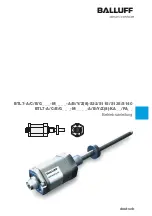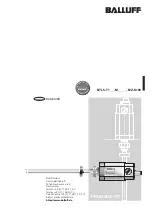
63
Software Configuration
The KPA100 is intended to be compatible with a wide range of existing
PC-based logging, DXing, remote control, and contesting applications.
However, we cannot guarantee 100% compatibility. In general, software
used with the K2 should be set up as follows:
Radio Type:
Elecraft K2
3
Interface:
4800 baud, 8 data bits, no parity, 2 stop bits (1 will also work)
Handshaking:
Set to "None" if possible. No hardware handshaking is
required.
Polling:
Many programs periodically
poll
the radio to see if the operator
has manually adjusted any of the controls. The K2 can respond very
quickly to these requests, but we recommend a setting of 1-3 seconds to
minimize possible computer noise. Polling during transmit is allowed, but
we recommend turning it off if possible.
Table 1
provides details on setting up selected remote control and
logging software for use with the K2. Check our web site additional
information. Also available on the web is the
Elecraft KIO2
Programmer's Reference
, which you can consult when writing your own
K2 control programs. The KPA100 and KIO2 serial interfaces are
functionally identical.
Using Elecraft's K2REMOTE and K2VOICE PC Software
K2REMOTE provides flexible remote control of the K2, even over the
Internet (using TCP/IP). K2VOICE is a voice feedback program for the
K2 which make the K2 fully usable by hams who are unable to see the
normal K2 controls and displays. You can download the programs and
associated documentation from our web site.
3
If your software does not list the K2, select the TS-570D or the closest equivalent (950,
850, 50). The K2 can recognize a large subset of TS-570 commands. (TS-570 is a
trademark of the Kenwood Corporation.)
Table 1.
Application software information.
Program
K2 Configuration and Operating Notes
CT
DOS program; requires a batch file to start up correctly (for
details see http://www.k1ea.com/hintkink.htm). In the batch
file, use the command
COMTSRx -Px -B4800 -N82
(e.g., x
= 1 for COM1)
Set Radio 1 to TS950 if K2 is not in the list.
Optional: change bands from the K2 manually the first time so
CT can store the values for VFO A and VFO B for each band.
DX4WIN
Use K2 or Kenwood (generic) radio type, 4800 baud. Default
polling rate is 6000 msec with 6 retries, but 1000-2000 msec
is recommended. Clicking on a DX spot may set the wrong
mode. Don't use multiple-band scanning, since this could
cause excessive relay wear.
DXBASE
Use Elecraft or Kenwood radio type.
K2REMOTE,
K2VOICE
See descriptions on previous page.
Log-EQF,
Rig-EQF
A modified rig file for these programs that better supports the
K2's RTTY and RTTY-reverse modes can be found on our
web site.
MixW
Version 2.02 and later includes K2 support (listed under
Kenwood)
NA
Run the "CONFIG" program. Select F4 (Serial Port Setup).
On the desired port, set baud to 4800, and set device to
XCVR1. Select F5 (Equipment Configuration). Set XCVR #1
to KENWOOD1 Run NA. Go to the Equipment Control Panel
and check Radio #1.
RCP570
TS-570 emulation; some controls not applicable to the K2.
The program can take up to 30 seconds to turn on the radio
display on start-up. Don't use SEND button (hangs the
computer).
T-R Log
In the configuration file (.cfg), set:
RADIO ONE TYPE =
TS570
(Version 6.63 and later: use
K2
) Also add
SHIFT
KEY ENABLE = TRUE
to use the right and left SHIFT keys
to change the receive frequency when RIT is on. Hitting both
shift keys simultaneously resets the RIT to zero.
TRX
Manager
RTS/CTS loop-back required at computer end (pin 7 to 8).
WriteLog
Check the "Poll" box, and select No for "Comm PTT".
YPLOG
Specify 2-wire mode (RxD/TxD, no handshaking).
Note: The program may send the K2 "FL" filter selection
commands, which are not supported.












































